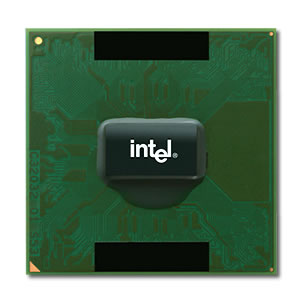Inside Intel's Sonoma

After many months of delay, Intel's new 'Sonoma' portable processor and chipset combo is ready for inspection. The Centrino platform has been one of the company's notable successes over an otherwise bumpy period, as it has included most functions a notebook computer needs while balancing high performance against battery life. This recipe is followed faithfully in this latest iteration.
Pentium M with 533MHz FSB
Centre stage is taken by a buffed-up version of the processor previously known as Dothan, now in its Pentium M business suit, fabricated in a 90nm architecture and topped off with 2MB of Level 2 cache. Most of the new Pentium Ms have a 533MHz frontside bus (FSB), giving what Intel claims is a 33 percent increase in memory data transfer over the previous chip's 400MHz.

The updated processor range clocks in at speeds of 2.13GHz (Pentium M 770), 2GHz (760), 1.86GHz (750), 1.73GHz (740) and 1.6GHz (730). There are also low voltage (1.5GHz, 758) and ultra low voltage variants (1.2GHz, 753) with 400MHz FSBs, aimed at manufacturers making very slim and light notebooks. Power requirements range from 5 watts for the 753 to 27 for the 770.
The only other addition to the Pentium M architecture is support for the Execute Disable bit, which with operating system support -- provided by Windows XP Service Pack 2, for example -- can prevent buffer overflow virus or trojan attack code from executing on the system stack.
Mobile 915 'Alviso' chipset
Most of the differences in the updated Centrino platform live in the Alviso chipset, now officially named the Intel Mobile 915 Chipset Family. This includes support for up to 2GB of DDR2 DRAM, which uses a lower voltage than DDR1, has a smaller page size and extra power-down modes. Although the higher speed of DDR2 somewhat negates these low-power features, Intel says that with the 915, DDR2 memory at 533MHz will peak at 60 percent faster than 400MHz DDR RAM, and can save an average of 120mW per stick.The new memory is physically smaller, too.
The 915 chipset also includes a power-managed Serial ATA disk interface, and PCI Express, which is advertised at being up to twice as fast for I/O and four times as fast for graphics. Expansion cards for this will follow the new ExpressCard format, which is around half the size of the venerable PC Card standard, and which has a somewhat squashed orange rabbit as its logo. Most, if not all, notebooks with ExpressCard launched this year will also have a slot for older formats, and most, if not all, ExpressCard cards this year will duplicate functions already available with PC Card.
Integrated graphics on the 915GM -- the Graphics Media Accelerator 900 -- includes DirectX 9.0 hardware support for 3D games, as well as high-definition, wide aspect ratio and TV standard outputs. Intel claims that the integrated graphics has twice the raw speed of the previous Centrino chipset, the 855GME, and that with two 533MHz DDR2 memory modules the chip can reach a preliminary 3DMark03 performance rating of 1,140. This compares with figures in the 5,000 range for high-specification desktop gaming configurations and is unlikely to excite the hard core, but should be sufficient for games a couple of years old. Most business applications are expected to be unaffected.
Likewise, adoption of the Intel High Definition Audio standard means that the 915 chipset can support multiple independent audio streams -- such as streamed telephony at the same time as surround-sound DVD playback -- in ways that may have consumer applications but are currently underexploited in business productivity tools. One small yet welcome point is that the audio circuitry can detect what sort of audio device is plugged into its sockets, and can therefore automatically route headphone signals to whatever socket the headphones are in.
Wireless trinity
Centrino's wireless now works with the trinity of 802.11a/b/g as well as current security standards (802.11i, WPA2 and Cisco Compatible Extensions version 3), some or all of which should be standard in any corporate installation that takes itself seriously. Intel has also worked on the wireless control software, and claims that the new PROSET/Wireless software 9.0 will provide better installation, connectivity and troubleshooting features for consumer and business users alike.
In normal use, it's unlikely that notebook users will notice much difference with the new Centrino platform. However, with rigorous power management regimes they should give somewhat better battery life: likewise, when run on the mains or with disregard for battery life they should chomp through computationally intensive tasks with a bit more panache. Past experience indicates that we should wait for manufacturers to deliver a range of systems emphasising different aspects of the platform's capabilities before deciding just how much faster or longer it runs. Intel is promising more than 150 designs by the middle of 2005, so we shouldn't have to wait too long. Stay tuned for a series of Sonoma-platform notebook reviews in the coming weeks.